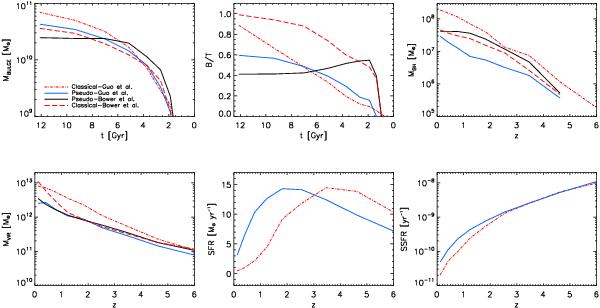Fig. 3

Comparison among the median properties of random subsamples of classical and pseudobulges from the Guo et al. (2011) model (red, dot-dashed and blue, solid lines, respectively) and Bower et al. (2006) model (red, long-dashed and black, solid lines, respectively). Upper panels: bulge mass (left), bulge-to-total B/T ratio (middle), and black hole mass (right) as a function of cosmic time or redshift. Lower panels: subhalo virial host mass (left), star-formation rate (middle), and specific star-formation rate (right) as a function of redshift. Overall, pseudobulges appear to have prolonged star-formation rates, significantly lower B/T, and in models with only mergers as fuelling mechanism, lower mass black holes, in agreement with observational data.
Current usage metrics show cumulative count of Article Views (full-text article views including HTML views, PDF and ePub downloads, according to the available data) and Abstracts Views on Vision4Press platform.
Data correspond to usage on the plateform after 2015. The current usage metrics is available 48-96 hours after online publication and is updated daily on week days.
Initial download of the metrics may take a while.


